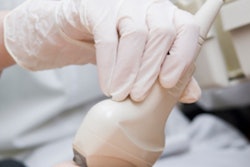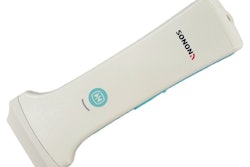Tuesday, November 29 | 10:50 a.m.-11:00 a.m. | RC304-08 | Room E450A
In this Tuesday morning presentation, researchers will share results from a study that investigated the role of screening ultrasound for differentiating unstable meniscal tears from chronic tears.A group led by Dr. Sandra Rutigliano of the University of Pennsylvania used dynamic ultrasound to assess 12 patients with unilateral knee pain, taking images of the medial meniscus in both knees with the joint extended, with and without weight bearing. Patients also underwent a shortened MR exam of both knees. The researchers then correlated the degree of meniscal tear on weight-bearing and nonweight-bearing ultrasound with the MRI findings and demographic and clinical factors.
Ultrasound was effective in imaging medial meniscal extrusion, Rutigliano and colleagues found. Of 24 knees, there were five tears (one radial, two oblique, and two complex); extrusion averaged 2.4 mm at rest and 3.5 mm with weight bearing in menisci without a tear on MRI, while extrusion averaged 2.3 mm at rest and 4.3 mm with weight bearing in menisci with a tear on MRI.
The difference in extrusion averaged 1.3 mm in patients who had pain for less than a year, compared with 1.8 mm in those with pain for more than a year. In addition, patients older than 50 also had higher extrusion difference rates, at 1.2 mm, compared with 0.9 mm in those younger than age 50.
Using dynamic ultrasound -- with and without weight bearing -- is an effective way to distinguish unstable from chronic meniscal tears, Rutigliano's group concluded.




















